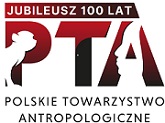Kodavas of Kodagu District, Karnataka: Their demographic profile
DOI:
https://doi.org/10.18778/1898-6773.48.1-2.04Abstract
Kodava są endogamiczną grupą liczącą około 66 tysięcy ludzi zamieszkujących górzysty region okręgu Kodagu stanu Karnataka w południowych Indiach. Populacja charakteryzuje się wyraźną zmianą tempa przyrostu naturalnego odbijającą się w jej strukturze wieku. Współczynnik płodności jest obecnie bardzo niski; Średnia liczba urodzeń żywych w rodzinie o płodności zakończonej wynosi 4,54, a średnia dożywających dorosłości 4,20. Współczynnik sposobności do selekcji Crow'a I=0,35, jego składnik mierzący zróżnicowanie płodności If==0,24, a wymieralności Im==0,09. Współczynnik krzyżowania wynosi 0,782. Efekt dryfu genetycznego szacowany kilkoma różnymi metodami wynosi, zależnie od metody, od 0,00010 do 0,00015. Średnia odległość małżeńska obliczana dla trzech różnych grup wieku dorosłych, mieści się poniżej 20 mil. Współczynnik wsobności loci autosomalnych jest w badanej populacji znacznie niższy niż w większości grup ludzkich południowych Indii. W niniejszej pracy badano też wpływ małżeństw pomiędzy krewnymi na płodność i wymieralność potomstwa.
Downloads
References
Basu A. 1969, The Pahira: A population genetic study. Am. J. Phys. Anthr., 31, 399 - 416.
View in Google Scholar
DOI: https://doi.org/10.1002/ajpa.1330310315
Cavalli-Sforza L. L., W. F. Bodmer, 1976, The Genetics of Human Populations. Freeman, San Francisco.
View in Google Scholar
Crow J. F. 1958, Some possibilities for measuring selection intensities in man. Hum. Biol., 30, 1 - 13.
View in Google Scholar
Lasker G. W. 1952, Mixture and genetic drift in ongoing human evolution. Auer. Anthrop., 51, 133 136.
View in Google Scholar
Li C. C., 1963, Population Genetics. The Univ. Chicago Press, Chicago.
View in Google Scholar
Mukheries D. P., S. Bhasker, 1974, Studies on inbreeding and its effect in some endogamous populations of Chittoor District. In the proceed. 1st Annual Conference of Indian Society of Human Genetics. Bombay.
View in Google Scholar
Pollard A. M, Yusuf Forhat, G. N. Pollard, 1974, Demographic Techniques. Pergamon Press, Rushcutters Bay.
View in Google Scholar
Rao P. S. S, S. G. Inbaraj, 1977, Inbreeding effects on human reproduction in Tamil Nadu of South India. Ann. Hum. Genet., 41, 87 - 98.
View in Google Scholar
DOI: https://doi.org/10.1111/j.1469-1809.1977.tb01964.x
Rao P. S. S., S. G. Inbaraj, 1977, Inbreeding in Tamil Nadu. Soc. Biol. 24, 281 - 288.
View in Google Scholar
DOI: https://doi.org/10.1080/19485565.1977.9988298
Reddy B. R. C. 1974, Genetic effects of consanguineous marriage. Unpublished report of Anthropological Survey of India, Mysore.
View in Google Scholar
Risley H. H., 1915, The People of India, 2nd ed. W. Thacker, London.
View in Google Scholar
Roberts D. F. 1956, A Demographic Study of Dinka Village. Hum. Biol. 28, 323 - 349.
View in Google Scholar
Salzano F. M, J. V. Neel, D. M. Lewis, 1971, Demographic data on two Xavante villages: genetic structure of the tribe. [In] „Human Populations, Genetic Variation and Evolution” L. N. Moris (ed.), Chandler Publ. Comp., London.
View in Google Scholar
Sastry D. B, S. M. Sirajuddin, C. M. Raju, R. K. Gulati, S. Yassen Saheb 1980, A14:BO, MN, Rh, Kell, Duffy blood groups and sickle cell trait among the Kodavas of Kodagu District. Przegl. Antrop., 46, 369 - 374.
View in Google Scholar
Schull W. J, J. V. Neel, 1965, The effects of inbreeding on Japanese children. Harper and Row Inc. New York.
View in Google Scholar
Schull W. J, H. Nagano, M. Yamamoto, I Komatsu, 1970, The effects of parental consanguinity and inbreeding in Hirado, Japan. I. Still births and pre-reproductive mortality. Amer. J. Hum. Genet. 22, 239 - 262.
View in Google Scholar
Schull W. J, J. V. Neel, 1972, The effects of parental consanguinity and inbreeding in Hirado, Japan. V. Summary and interpretation. Amer. J. Hum. Genet., 24, 425 - 453.
View in Google Scholar
Srinivas M. N. 1952, Religion and Society among the Coorgs of South India. Asia Publishing House, Bombay.
View in Google Scholar
Wright S. 1931, Evolution in Mendelian populations. Genetics, 16, 97 - 159.
View in Google Scholar
DOI: https://doi.org/10.1093/genetics/16.2.97
Yaseen Saheb S. 1979, Population structure of Kodava and Amma Kodava populations of Kodagu (Coorg) district. Anthropological Survey of India (unpublished), Calcutta.
View in Google Scholar
Downloads
Published
How to Cite
Issue
Section
License

This work is licensed under a Creative Commons Attribution-NonCommercial-NoDerivatives 4.0 International License.








